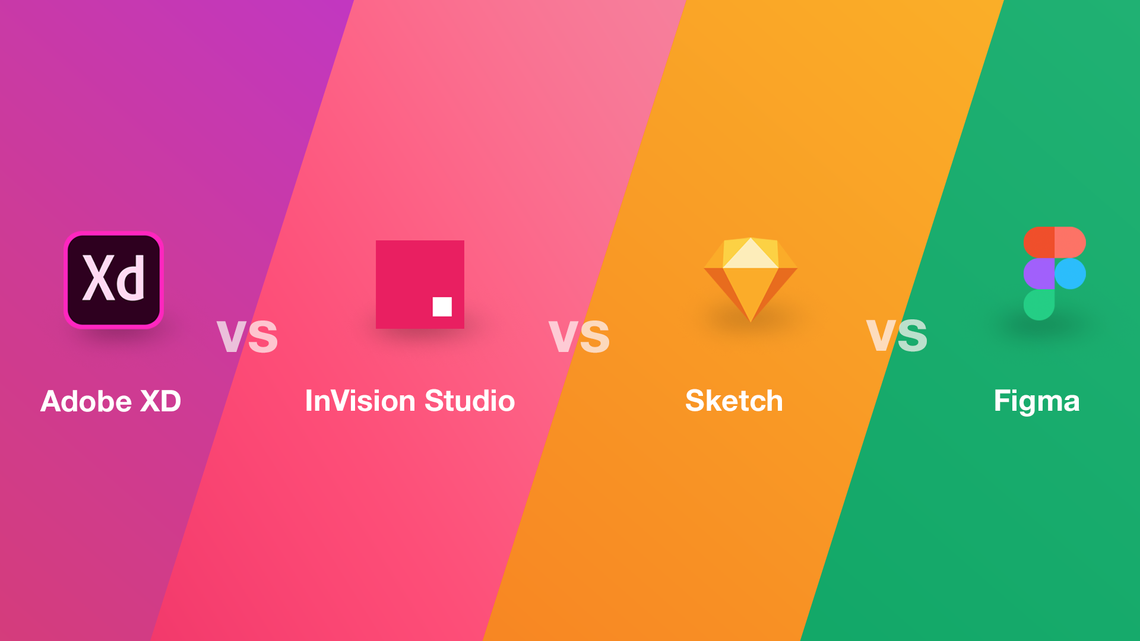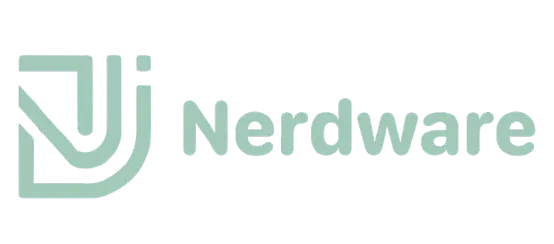
Comparative Analysis of the Top 5 UI/UX Design Tools: Features and Pricing
Introduction to UI/UX Design Tools
In the contemporary digital landscape, the significance of User Interface (UI) and User Experience (UX) design tools cannot be overstated. As businesses strive to create engaging and efficient digital experiences, the role of these tools becomes increasingly critical. UI/UX design tools facilitate the creation of user-centered applications and websites by enabling designers to prototype, collaborate, and iterate swiftly. With the proliferation of digital products, users have come to expect seamless interactions, making effective UI/UX design an essential component for success.
These tools assist designers in visualizing their concepts and streamlining the design process, ultimately leading to enhanced user satisfaction. The right UI/UX design tool empowers teams to create intuitive interfaces that resonate with users, significantly impacting usability, accessibility, and overall effectiveness. In an era where user preferences dominate market trends, investing in specialized design tools can differentiate a company from its competitors.
Moreover, the rise of remote work has necessitated tools that foster efficient collaboration among design teams. Many modern UI/UX design tools are equipped with real-time collaboration features, which allow team members to work together seamlessly, regardless of geographical location. This enhances productivity and encourages creative input from all stakeholders involved in the design process.
As we delve deeper into the subject, this article aims to compare five leading UI/UX design tools: Figma, Sketch, Adobe XD, InVision, and Axure. By examining the features and pricing of each tool, we will provide insights that can assist designers and organizations in selecting the most suitable option for their specific needs. Understanding the capabilities of these tools is crucial in making informed decisions that pave the way for successful design outcomes.
Overview of the Top UI/UX Tools
In the rapidly evolving field of design, several UI/UX tools stand out for their unique features and functionalities. Each tool has been developed with specific goals and target audiences in mind, catering to the varying needs of designers. This overview provides a snapshot of five of the most prominent design tools currently available.
First among them is Adobe XD, a powerful design and prototyping tool that originated from Adobe’s suite of creative software. Its primary purpose is to facilitate the process of designing user interfaces and web applications, allowing designers to create wireframes, prototypes, and design specifications. Adobe XD appeals particularly to professional designers and teams already utilizing Adobe’s ecosystem, as it integrates seamlessly with other Adobe products.
Next, we have Sketch, which has gained significant traction among UI and UX designers since its launch in 2010. This vector-based design tool is predominantly used for digital design projects, providing a range of features tailored to create interactive prototypes and design systems. Sketch caters primarily to designers working in macOS environments, making it popular among freelance designers and small design studios.
Figma has emerged as a leading collaborative interface design tool, known for its web-based platform that allows multiple users to work simultaneously. This cloud-based tool is ideal for design teams that prioritize collaboration and real-time feedback on projects. Figma supports a diverse audience, ranging from individual designers to large enterprises seeking a versatile design solution.
InVision is another noteworthy tool that specializes in prototyping and collaboration. Launched in 2011, it offers various features designed to enhance communication between design teams and stakeholders. InVision is often chosen by teams looking for an effective platform to share designs and gather feedback throughout the design process.
Lastly, Axure RP serves as a comprehensive solution for wireframing and prototyping. Its advanced capabilities allow designers to create highly interactive prototypes that mimic the functionality of final products. Axure RP is often favored by experienced designers and product managers who require detailed specifications and documentation to accompany their designs.
Feature Comparison
When evaluating the top UI/UX design tools, it is essential to break down their features to discern which one aligns best with your design needs. We will examine five prominent tools: Figma, Sketch, Adobe XD, InVision, and Axure, focusing on their collaborative features, prototyping capabilities, design components, integrations, and user interface options.
Figma stands out for its exceptional collaborative features. As a cloud-based platform, it allows multiple users to work simultaneously on a design, making real-time updates possible. Figma also boasts advanced prototyping capabilities, enabling designers to create interactive prototypes with transitions and animations smoothly. The design components library is robust, offering reusable elements that enhance consistency across projects. In terms of integrations, Figma seamlessly connects with various project management and communication tools, making it ideal for teams.
Sketch, primarily a Mac application, is renowned for its vector editing capabilities and extensive symbol library. However, it tends to fall behind Figma when it comes to collaborative work; it relies on cloud services for real-time collaboration, which may not be as fluid. Nonetheless, Sketch supports plugins that extend its functionalities and integrates with numerous tools, although its prototyping features are less developed compared to Figma’s.
Adobe XD combines a user-friendly interface with powerful prototyping tools, including voice prototyping and auto-animation features. Its design component system is equally impressive, enabling designers to harness shared assets easily. Adobe XD also integrates well with other Adobe Creative Cloud applications, ensuring a smooth workflow for users within the Adobe ecosystem. However, its collaboration features may not compete with Figma.
InVision is celebrated for its prototyping and user testing capabilities, particularly its ability to create high-fidelity interactive prototypes. It also offers insightful feedback tools for design evaluation. However, its design features are limited, making it less ideal for creating initial designs. InVision integrates with various platforms, enhancing its usability for collaborative projects.
Lastly, Axure is a powerful tool for creating complex prototypes with extensive functionality. It offers advanced features such as conditional logic and variables, catering to designers who need intricate interactions. However, its steep learning curve and less intuitive interface may be off-putting for newer designers. While Axure facilitates collaboration, it lacks some of the seamless integrations found in other tools.
In summary, while all five tools offer unique strengths, their suitability greatly depends on the specific requirements of a project, including user collaboration, design capabilities, and integration with existing workflows.
User Experience and Interface Design
When it comes to user experience (UX) and interface design, each of the leading design tools—Figma, Sketch, Adobe XD, InVision, and Axure—offers distinct functionalities that cater to various design workflows. Figma stands out for its collaborative features, enabling multiple designers to work in real-time. This cloud-based platform also promotes efficiency through its straightforward interface, which enhances the user experience by reducing the learning curve for newcomers.
Sketch, although primarily used on macOS, has gained a solid reputation due to its intuitive design and strong community support. The tool excels in vector graphics and offers numerous plugins that customize the design process, making it a favorite among interface designers. However, users might face an initial learning curve if they are unfamiliar with its unique features and workflows.
Adobe XD provides a robust integration with other Adobe products, which can be beneficial for designers who are accustomed to Adobe’s ecosystem. It supports both design and prototyping in a unified space, allowing for seamless transitions between creating and testing user interfaces. The experience of using Adobe XD is enhanced by its responsive resize functionality that streamlines the adjustment of designs for different screen sizes, an essential feature in modern UX design.
InVision focuses heavily on prototyping, where designers can create interactive mockups to simulate user interactions. This capability is particularly helpful for user testing as it allows stakeholders to navigate the design before actual development begins. However, the tool can be slightly cumbersome for those who prefer direct interfacing with design features instead of jumping between design and prototyping.
Lastly, Axure stands out with its advanced prototyping capabilities, catering to complex design specifications. It allows users to create intricate interactions and conditional logic, thereby supporting projects requiring greater detail in UX. While this complexity may result in a steeper learning curve, it also offers designers the power to craft highly functional interfaces.
Collaboration and Sharing Features
In the realm of UI/UX design, effective collaboration and seamless sharing capabilities are paramount for ensuring that teams can work together efficiently, regardless of their physical locations. Each of the top five design tools offers various features that promote teamwork, version control, and efficient feedback mechanisms.
Firstly, tools such as Figma and Adobe XD stand out with their robust real-time collaboration capabilities. Figma allows multiple users to work on a design simultaneously, offering an intuitive interface where changes are displayed in real-time. This not only fosters a dynamic environment for team collaboration but also aids in quick decision-making processes. Meanwhile, Adobe XD multi-user features enable designers to invite team members for live editing sessions, making the process highly interactive and engaging.
Version history is another critical element in these tools. Most platforms, including Sketch and InVision, provide comprehensive version control options. Designers can revert to previous iterations of their designs, ensuring that accidental changes are easily manageable and that the integrity of the work is maintained. Additionally, this feature assists in tracking the evolution of a design, which is beneficial for future reference.
Sharing capabilities also vary among these tools. For instance, Figma and InVision offer easy sharing options through public links, enabling stakeholders to access the designs without needing to sign in. This is particularly advantageous for gathering feedback from clients who may not be familiar with the design tools. Moreover, platforms like Axure allow users to create prototypes that can be shared and tested, facilitating valuable feedback from testers and clients alike.
Finally, feedback mechanisms, such as comment threads within the design interface, are essential for streamlining communication within design teams. Many of these tools incorporate built-in comment features that allow stakeholders to leave notes directly on the design, ensuring that feedback is contextual and easily actionable. Overall, the collaboration and sharing features across these UI/UX design tools significantly enhance teamwork, promoting a more productive and coordinated design process.
Pricing Structure and Plans
The pricing plans for UI/UX design tools play a crucial role in the decision-making process for designers and teams alike. In this analysis, we will examine the pricing structures of five leading tools: Figma, Sketch, Adobe XD, InVision, and Axure, highlighting their individual and team-based subscription models as well as any available free trials or educational discounts.
Figma offers a tiered pricing model that includes a free version, which is accessible for individuals working on small-scale projects. For teams, Figma provides a Professional plan at approximately $12 per editor per month, and an Organization plan priced around $45 per editor per month, which brings additional collaboration and management features. Both options include a 30-day free trial, giving users ample time to evaluate the software’s versatility.
Sketch, primarily catering to macOS users, follows a subscription-based model that starts at $9 per editor per month. Notably, they provide a free trial for 30 days, allowing potential users to fully experience its capabilities. Additionally, Sketch offers a discounted rate for educational institutions, which makes it an attractive option for students and academic professionals.
Adobe XD operates on a freemium model, where users can start with a free plan that allows a limited number of shared prototypes and design specifications. For more advanced features, teams can opt for the single-user plan at $9.99 per month or a team plan priced at $22.99 per month, which includes enhanced collaboration features. Educational discounts are also offered, making it financially viable for students and educators.
InVision provides several pricing options beginning with a free plan for individuals. For teams, the Pro plan is available for $11 per user per month, while the Business plan approximately costs $22 per user per month. InVision also offers a 30-day trial period, making it easier for potential users to assess its unique features.
Lastly, Axure features a more premium pricing model with its Pro plan at around $29 per month and its Team plan starting at $49 per month, where collaboration features are more pronounced. While Axure does not have a free version, it provides a 30-day free trial, along with discounts for educational purposes, making it a viable option for students.
In summary, understanding the pricing structures and available plans of these UI/UX design tools is essential for making informed decisions. Each tool offers varying features, costs, and strategic discounts to cater to a range of users from individual freelancers to large teams. Assessing these elements can significantly impact the overall satisfaction and productivity of design workflows.
Target Audience and Use Cases
In the realm of UI/UX design tools, understanding the target audience and various use cases is crucial to selecting the right software. Each tool is tailored to a specific user group, ranging from freelancers to large enterprises, catering to diverse design workflows. Freelancers typically require tools that are cost-effective and easy to use, allowing them to efficiently showcase their creativity without extensive overhead. For instance, tools like Figma provide a collaborative online platform that is both affordable and accessible, making them ideal for solo designers seeking flexibility.
Small teams often benefit from tools that offer more collaborative features, enabling seamless interaction within the group. Tools such as Adobe XD and Sketch facilitate this collaborative environment through shared libraries and integration with other creative software. These aspects are vital for small teams that need to iterate designs quickly while maintaining consistency across projects. Adobe XD, in particular, stands out with its advanced prototyping capabilities, making it suitable for teams focused on rapid iteration and user testing.
On the other hand, larger enterprises require robust solutions that can handle complex projects and extensive collaboration across departments. Tools such as Axure and InVision are designed with enterprise-level features, offering extensive documentation capabilities, support for high-fidelity prototypes, and comprehensive project management functionalities. These tools are essential for vast teams managing multiple projects simultaneously, as their features help maintain a structured workflow. Scalable design solutions are critical in this context, allowing enterprises to adapt to various project needs while ensuring design quality.
Ultimately, selecting the right UI/UX design tool depends on understanding the specific requirements of the user group, the complexity of projects, and expected design workflows. Each design tool offers unique advantages tailored for different audiences, enabling users to align their preferences with the capabilities of the chosen software.
Figma
Figma is renowned for its real-time collaboration feature, making it an ideal choice for teams working remotely. The seamless cloud-based platform allows multiple users to design simultaneously, ensuring that feedback and iterations can be incorporated instantly. Additionally, Figma provides a freemium pricing model that is appealing for startups and individual designers, as basic features are accessible without cost.
However, one notable drawback of Figma is its dependency on a stable internet connection. Offline work capabilities are limited, which might hinder designers in locations with unreliable internet service. Furthermore, the extensive feature set may overwhelm novice users, leading to a steeper learning curve compared to other tools.
Sketch
Sketch is a popular choice among designers for its user-friendly interface and vast plugin ecosystem. It provides a robust set of vector editing tools, making it ideal for high-fidelity designs and prototypes. One of its key advantages is the supportive community that continually develops plugins, enhancing functionality significantly.
On the downside, Sketch is exclusive to macOS, which limits its accessibility for teams using Windows or other operating systems. Also, while it excels in design capabilities, it does not have built-in collaboration features like Figma, potentially leading to challenges in team projects without third-party tools.
Adobe XD
Adobe XD stands out for its integration with other Adobe Creative Cloud applications, allowing designers to leverage familiar tools and assets. Its robust prototyping features enable designers to create interactive designs seamlessly, enhancing the user experience during presentations. Additionally, it offers both free and paid plans, catering to varying user needs.
Conversely, Adobe XD may present a learning curve for those unfamiliar with Adobe’s ecosystem. Some users also report performance issues when handling large files, which can disrupt the workflow. Its collaboration features, though present, are sometimes considered less intuitive than those of competitors like Figma.
InVision
InVision excels in prototyping, allowing users to create realistic and interactive designs. Its ability to incorporate feedback directly into the platform fosters better communication within teams. The built-in design system management is a great advantage for larger teams that require structured design processes.
Nevertheless, InVision has limited vector editing capabilities compared to tools like Sketch or Figma. This limitation may necessitate using an additional tool for design creation, complicating the workflow. Moreover, some users find the user interface less intuitive, which could slow down initial adoption.
Axure
Axure is recognized for its advanced wireframing and prototyping features, which include the ability to create highly functional prototypes with conditional logic. It is particularly advantageous for designers focused on complex projects requiring detailed interaction mapping. The tool also offers comprehensive documentation options, making it easier for teams to communicate design decisions.
Conversely, Axure can be seen as pricey, especially for smaller teams or freelancers, as its cost may not justify the features for all users. Additionally, it is often criticized for its steep learning curve, which may deter new users from fully utilizing its capabilities. The interface can also appear dated compared to more modern design tools.
Conclusion and Recommendations
In examining the top five UI/UX design tools, several key features and pricing structures have been highlighted that cater to a diverse range of user preferences. tools such as Adobe XD, Sketch, Figma, InVision, and Axure each offer unique capabilities that can enhance the design process. Adobe XD stands out for its seamless integration with other Adobe products, making it an excellent choice for teams already embedded in that ecosystem. On the other hand, Figma excels in collaborative features, allowing multiple users to work on projects simultaneously, a significant advantage for businesses with remote teams.
For designers on a budget, Sketch provides a robust platform at a reasonable price, particularly for Mac users, while InVision offers a solid suite of prototyping tools that complement usability testing. Axure is more suited for complex projects, one that demands advanced functionalities such as dynamic content and conditional logic. Each tool comes at different price points, making it crucial for users to assess their specific needs against their budget constraints.
When selecting a UI/UX design tool, consider your primary focus—be it collaboration, prototyping, or integration with existing platforms. For teams prioritizing real-time collaboration and cloud storage, Figma may be the most fitting option. Conversely, those who require powerful prototyping and detailed wireframing might find Axure more appropriate. Ultimately, the choice will depend on individual project requirements and team dynamics.
In conclusion, whether you are an independent freelancer or part of a large organization, the right UI/UX design tool can significantly impact your workflow and project outcomes. Reviewing the features, pricing, and user preferences is key to making an informed decision that aligns with your design objectives.








Eslam Ghoneim
10 October, 2024 8:59 pmThanks for this knowledge 💕